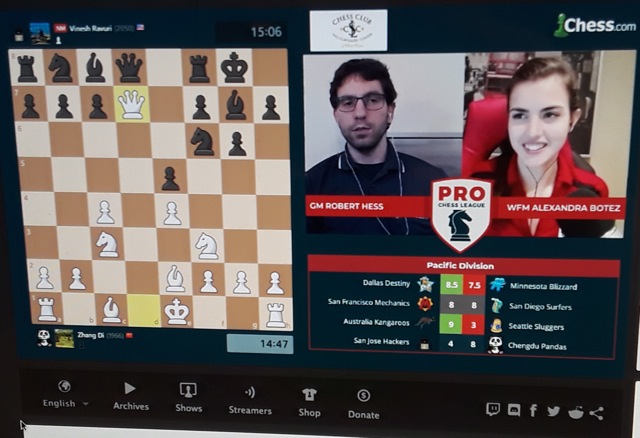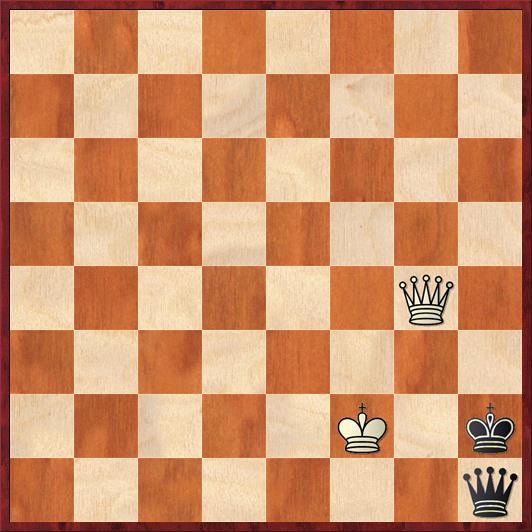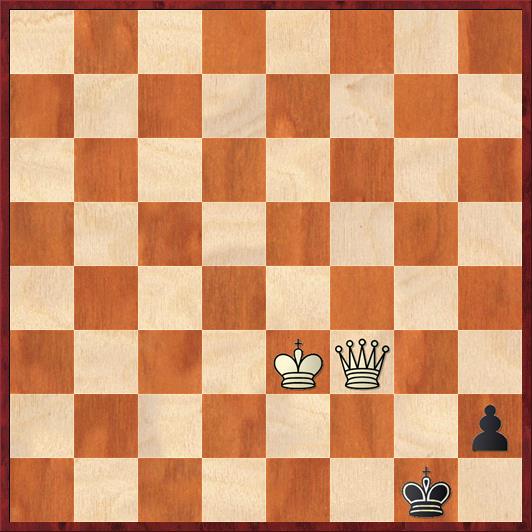Last week I wrote that the San Francisco Mechanics’ PRO Chess League match this week was one that we “really have to win to achieve our team goals.” Hm, perhaps that was a bit of exaggeration. In a very hard-fought match against the San Diego Surfers, the Mechanics ended up with an 8-8 tie.
I’m not sure if everyone on the team will agree, but I think that this was an okay tie and maybe even a good tie. Of course, if we had scored just ½ point more we would have gotten 5½ points more in the standings. But when you look objectively at the games we played in the last three rounds, I think you have to say that we were lucky to come out even. One caveat was that I didn’t see the first quarter of the match, when we got off to a 2½-1½ lead. But in the second quarter we were pretty lucky to score 2-2, in the third quarter we were extremely lucky to score 2-2, and then in the fourth quarter San Diego deservedly won 2½-1½ to tie the match.
The match basically came down to two games, one of which broke our way and the other broke the Surfers’ way. Round three looked as if it was going to be a complete disaster. The worst disaster was happening in the game between our second board, Parimarjan Negi, and San Diego’s first board, Aleskey Dreev. Negi missed a tactic in the opening and got such a bad position that he decided to sacrifice a piece for two pawns. His compensation for the sacrifice was basically zero, but at least it enabled him to complete his development and have active play for his pieces.
As the other games came to an end, Negi kept fighting and fighting – putting up what GM Jonathan Rowson calls “infinite resistance.” This is what you do when you know that you are objectively lost, but you swear that you’re not going to give up until they pry your cold, dead fingers from the last pawn. Still, it looked like a long thankless task with very little chance of success.
Position after 0. … Kf3. White to move.
FEN: 8/8/8/8/3K2Np/5k2/5P1P/8 b – – 0 1
Eventually, they got to the position above, with Dreev (White) to move.
If I were White, the move I would immediately want to play is 1. Nxg4! But the consequences need to be very carefully calculated. After 1. … Kxg4, the natural-looking move 2. Ke4?? only draws, because Black is able to win the h-pawn and extricate his king after 2. … Kh3 3. f4 Kxh2. Instead, White has to play 2. Ke3!! You might think that it is still a draw after 2. … Kh3 3. f4 Kxh2, because after 4. Kf2?? Black can simply stalemate himself with 4. … h3 5. f5 Kh1 6. f6 h2 7. f7 stalemate. However, White has an amazing winning resource based on the idea of allowing Black’s h-pawn to promote and then checkmating him: 4. f5!! Kg3 (no other move is better) 5. f6 h3 6. f7 h2 7. f8Q h1Q 8. Qg7+ Kh3 9. Qh6+ Kg2 10. Qg5+ Kh3 11. Qh5+ Kg2 12. Qg4+ Kh2 13. Kf2!! (see diagram).
Position after 13. Kf2 (analysis).
FEN: 8/8/8/8/6Q1/8/5K1k/7q b – – 0 13
This is a position that every chess player should know by heart. White threatens Qg3 mate or Qh4 mate, and Black sadly has no playable checks and no way to defend against the mates.
To make it even more complicated, you also have to look at the “fake-out” line where Black feints toward the h-pawn and then comes back: 1. Nxg4 Kxg4 2. Ke3 Kh3 3. f4 Kg4!? The point of this move is to lure White’s king onto the “wrong” square e4. Unfortunately, Black loses two tempi and White loses only one, so White still wins after 4. Ke4 Kh3 5. f5 Kxh2 6. f6 Kg2 7. f7 h3 8. f8Q h2 9. Qf3+ Kg1 10. Ke3! This is a slightly simpler version of the previous line: Black promotes, but White checkmates on f2.
Position after 10. Ke3 (analysis). Black to move.
5Q2/8/8/8/8/4K3/7p/6k1 b – – 0 10
Didn’t Dreev know about this trick? Of course he did. But I haven’t told you an important piece of information: he was down to 1.6 seconds on his clock! (Maybe 3.6 when you add the time increment.) I don’t care how well you know your endgames, there’s no way you’re going to be 100 percent sure of all these variations within 1.6 seconds, or even 3.6 seconds. So Dreev did the one thing that was even worse than miscalculating. He hesitated just a moment … and his flag fell!
That unbelievable turnaround saved the Mechanics’ night. Instead of going into the last round behind 5½-6½, we were ahead 6½-5½.
That set up the second key game. In the last quarter, Sam Shankland beat a demoralized Dreev on board one, while Negi drew quickly against Melik Khachiyan on board two and Rochelle Wu lost against Keaton Kiewra on board four. That gave us an 8-7 lead with one game still going: Daniel Naroditsky against Joshua Sheng on board three.
If you had told me before the match that it would come down to that game, and that Naroditsky would only need a draw to win the match for us, I would have been extremely optimistic. After all, Naroditsky is a GM and has 170 rating points on Sheng. But playing the Black side of a Scotch Game, Naroditsky never really looked comfortable. His position alternated between looking bad and looking as if he might escape. But finally he lost a pawn and, although he threw the kitchen sink at Sheng in the endgame, Sheng was ruthlessly accurate. In fact, amazingly accurate given the pressure. Sheng won the game and San Diego pulled into an 8-8 tie.
This was a stunning disappointment for us, given the fact that Danya had really been playing the best chess on our team over the last three weeks. But in fifteen-minute chess, anything can happen!
All in all, Sheng should get a lot of credit for his heroic victory over Naroditsky. Usually, scoring 2½ points on third board would be a recipe for victory. But Negi’s amazing stroke of luck against Dreev saved our bacon.
By the way, although it was truly a lucky win, I want to give Negi a lot of credit. He put himself in a position to get lucky by fighting so incredibly hard against Dreev. It was his hard work and determination that forced Dreev to use all the time on his clock. So while it was a lucky win, it was not an undeserved win.
Just for comparison, here is a win that was lucky and undeserved. It’s a position in the game between Zhang Di (White) of Chengdu and Vinesh Ravuri (Black) of San Jose in last night’s match.

Yes, White’s queen on d7 is en prise in four different ways. Zhang wanted to trade queens on the previous move (8. Qxd8) but, as you know, it’s a long journey from d1 to d8. The queen only made it as far as d7 before collapsing from exhaustion.
Yes, even PRO Chess League players suffer mouse slips sometimes! Until we install mind-reading software on our computers, it’s a sad fact of life about Internet chess (and it’s one reason I don’t play on the Internet).
Anyway, I would argue that Ravuri’s win was lucky and undeserved, because he did not do the slightest thing to provoke White’s blunder, 8. Qd7??? All he did was play seven book moves of the King’s Indian Defense! Fortunately, this accident did not change the outcome of the match, which Chengdu still won by 9-7.
Getting back to our match, one reason I would say it was a “good” tie is that we gained a little ground on both of the teams that are just ahead of us in the standings. As I just mentioned, San Jose lost to Chengdu, and Seattle lost to Australia, 6-10. Next week we will play the second Battle Royale, and we can hope to make up a lot more ground then. Here are the current standings in the Pacific Division:
1. Chengdu – 118.5
2. Dallas – 115.5
3. Australia – 107
4. Minnesota – 99.5
5. San Jose – 92.5
6. Seattle – 90
7. San Francisco – 74.5
8. San Diego – 58





